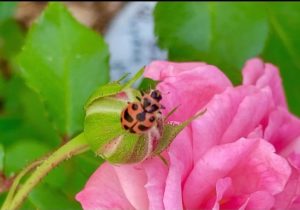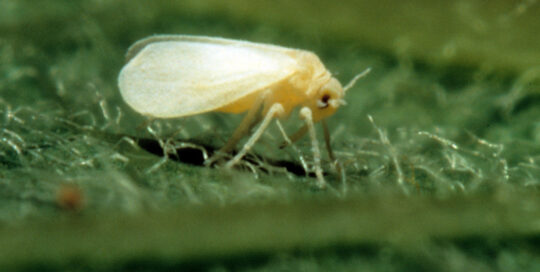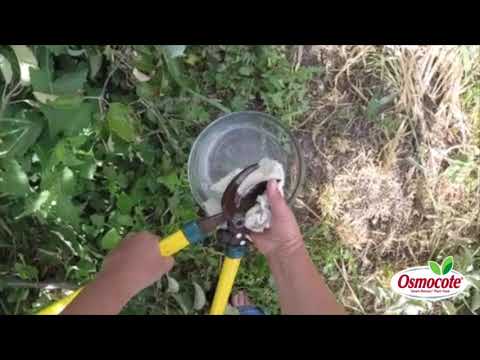Top 10 Creepy Crawlers
Views: 6549

There seems to be a never-ending list of creepy crawlers that wreak havoc in the vegetable and flower garden. It’s hard to pick the worst, but I did a shout out on Facebook to find out which ones make people pull out their hair more than anything.
Here are the top 10 creepy crawlers:
Earwigs
As one guy commented, “Aren’t they those things they put in Chekhov’s ears in The Wrath of Khan?”
Yep, these little things are straight out of a horror movie. Not only will they make a grown man scream like a girl, they burrow into vegetables creating lots of holes and defecating all over them. It’s very hard to completely eliminate earwig habit since dark, moist areas are commonplace in the garden. Granular insecticides work better than sprays, and if you want to go a more natural route try diatomaceous earth, borax or cayenne pepper.
Slugs
These are just icky. These creepy crawlers will crawl over plants, particularly at night, eating their way through the leaves and sliming everything. Diatomaceous earth is another good option, or turn the kids loose with the salt shaker. Ducks also do a bang up job of keeping plants picked clean.
Japanese beetles
Japanese beetles are pretty when they’re not devouring your plants. These are a bane to many eastern and gardeners because some years it seems impossible to be rid of them. Cover your prized roses with a tulle fabric or floating row cover to keep them safe. Or pick them off by hand and drop them in a can of water. Traps are often ineffective, and some experts claim they actually attract them.
Potato beetles
These are yucky little nuggets that climb all over your potato plants, and can defoliate a plant in short order. Planting nightshade as a trap crop roughly ten feet from your potato patch may keep them away, but be careful if you have kids since the berries are poisonous, but look delicious. Carbaryl and pyrethroids are both effective. Rotate treatments for the best results.
Grasshoppers
Late in the summer, when everything is nearing harvest, grasshoppers often invade and ruin the party. There are lots of insecticides that are effective, but one option without a lot of the collateral damage is using products such as Semaspore or Nola Bait. These contain protozoa that infect and weaken the grasshoppers.
Blister Beetles and other creepy crawlers
Even though these beetles produce a toxin that can burn the skin, theyre not all bad. They eat grasshopper larvae! With that said, when theyre on your tomatoes or other crops theyre not as endearing. A couple of years ago I had them on my beets, and I sucked them off with the Shop-Vac because I was pregnant and didnt want to run into town to buy a spray. If you do opt for a spray, you can go with a more eco-friendly option, such as Monterey Garden Insect Spray or Entrust, whose main ingredient is spinosad (a fermented soil-borne bacterium).
Hornworms
This is a big reason to be kind to your beneficial insects. These are big, juicy caterpillars that can defoliate tomatoes and others in the same family. If theyre really bad, pick them off and kill them, but for the most part other insects do a lot of the work. Lady beetles and green lacewings actually prey upon the young larvae, and several parasitic wasps use them for mobile nurseries. Pesticides are rarely needed.
Cabbage Loopers
When my son, Sam, comments on the pretty butterflies hovering above the cabbage or broccoli, I know Im going to have to start looking for the little green inchworms in another week or so. My biggest gripe is their chewing on my beautiful big leaves, as well as the poo. Not good. Handpick them when possible, but if theyre really out of control you can spray them with BT.
Flea Beetles
These are another highly annoying pest of leafy crops. If it looks like someone peppered your kale, chard, spinach or other green with a tiny shotgun, then you probably have flea beetles. One of our gardeners at the community gardens dosed her plot with a heavy concentration of garlic steeped in water. It worked so that would be my first choice.
Creepy Crawlers: Corn Earworms
It’s pretty unappealing to peel back the husks on sweet corn to have corn earworms inside. Probably the easiest home remedy is applying mineral oil to the silks after pollination can knock down the numbers significantly.
Meet Amy Grisak
Amy is a freelance author and photographer in Great Falls, MT who specializes in gardening, foods, and sustainable agriculture. She provides information on every kind…
Amy's Recent Posts

Learn the Magic of Sheet Mulches








